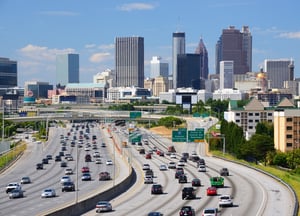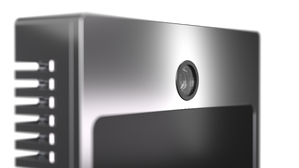
Traffic Management Systems
Better Traffic Management: Reducing Congestion With Real-Time Monitoring
Every year, traffic congestion costs U.S. cities billions of dollars in lost productivity, fuel waste, and environmental damage. Rush-hour gridlock frustrates commuters, delays emergency responders, and increases pollution—making urban mobility a growing challenge.Traditional traffic management systems, reliant on outdated infrastructure and fixed signal timing, struggle to keep pace with today’s road conditions.
A modern Traffic Management System (TMS) powered by real-time monitoring helps reduce congestion and improve road efficiency. Advanced technology, like Omnisight’s FusionSensor, provides live data that helps cities optimize traffic flow, prevent bottlenecks, and improve road safety for drivers and pedestrians

The Objectives of a Modern Traffic Monitoring System
Traffic management has come a long way from manual oversight and pre-programmed signal timing. Modern systems track vehicles and provide real-time intelligence that helps cities reduce congestion, improve road safety, and optimize traffic flow.A well-designed TMS serves multiple purposes, from live monitoring to long-term urban planning. Here’s how today’s TMS solutions are transforming urban mobility:
Sensors continuously track traffic conditions, giving authorities instant visibility into road activity.
Immediate alerts allow emergency responders to react quickly, reducing delays and improving safety for everyone on the road.
How the Omnisight FusionSensor Integrates Into Your City’s TMS
Omnisight’s FusionSensor is a powerful solution for modern traffic management. Using advanced technology to reduce traffic congestion, it delivers real-time insights. It enables instant communication with city traffic systems, allowing urban planners and traffic authorities to address congestion before it escalates.
Here’s how the FusionSensor can support your community’s traffic congestion monitoring system:
Whether on a crowded downtown intersection or a high-speed highway, the FusionSensor detects traffic build-ups in real-time, allowing traffic management centers to take immediate action.
Targeting congestion sources—whether an accident, a lane closure, or peak-hour demand—allows cities to adjust traffic signals, reroute vehicles, and prevent bottlenecks before they worsen.
Omnisight’s FusionSensor gives city planners the data they need to make real improvements. Analyzing real-time and historical traffic patterns helps identify the causes of congestion.
Whether the issue is ongoing infrastructure limitations or sudden disruptions like accidents and construction, planners can respond with targeted traffic congestion solutions. With this level of insight, cities can reduce bottlenecks, improve traffic flow, and create safer, more efficient roads.
TrueEdge, the FusionSensor’s onboard data processing technology, delivers instantaneous traffic analysis at the source. Instead of waiting for data to be transmitted and processed elsewhere, the sensor detects congestion as it happens and relays that information immediately.
Traffic management centers can adjust signals on the fly, and driver-facing apps can warn commuters of slowdowns before they get stuck. Faster responses mean fewer backups, safer roads, and a more efficient flow of vehicles throughout the city.
Easing gridlock and improving traffic efficiency contribute to cleaner air and support broader sustainability efforts. With smarter traffic management, cities can move toward a greener future while keeping transportation systems efficient and reliable.

Supporting Road Safety Through Smarter Traffic Management
Effective traffic flow monitoring plays a crucial role in reducing road accidents. Using live data helps cities create safer transportation systems for drivers, cyclists, and pedestrians:Early detection of traffic jams and sudden slowdowns allows traffic control centers to alert drivers, helping reduce rear-end collisions and other accidents caused by stop-and-go traffic.
Faster detection of accidents and congestion points allows emergency vehicles to receive data and respond to incidents more quickly. The benefit is shorter response times and better outcomes for traffic accident victims.
Optimize Your City’s Traffic Flow With Omnisight
Is your city ready for smarter traffic solutions? The Omnisight FusionSensor equips urban planners and transportation departments with the tools to reduce congestion, improve road safety, and optimize long-term city planning.
Take the next step toward a more efficient and sustainable transportation system.
Contact Omnisight to learn how the FusionSensor can integrate into your city’s Traffic Management System—helping you make data-driven decisions that improve mobility and safety for everyone on the road.

